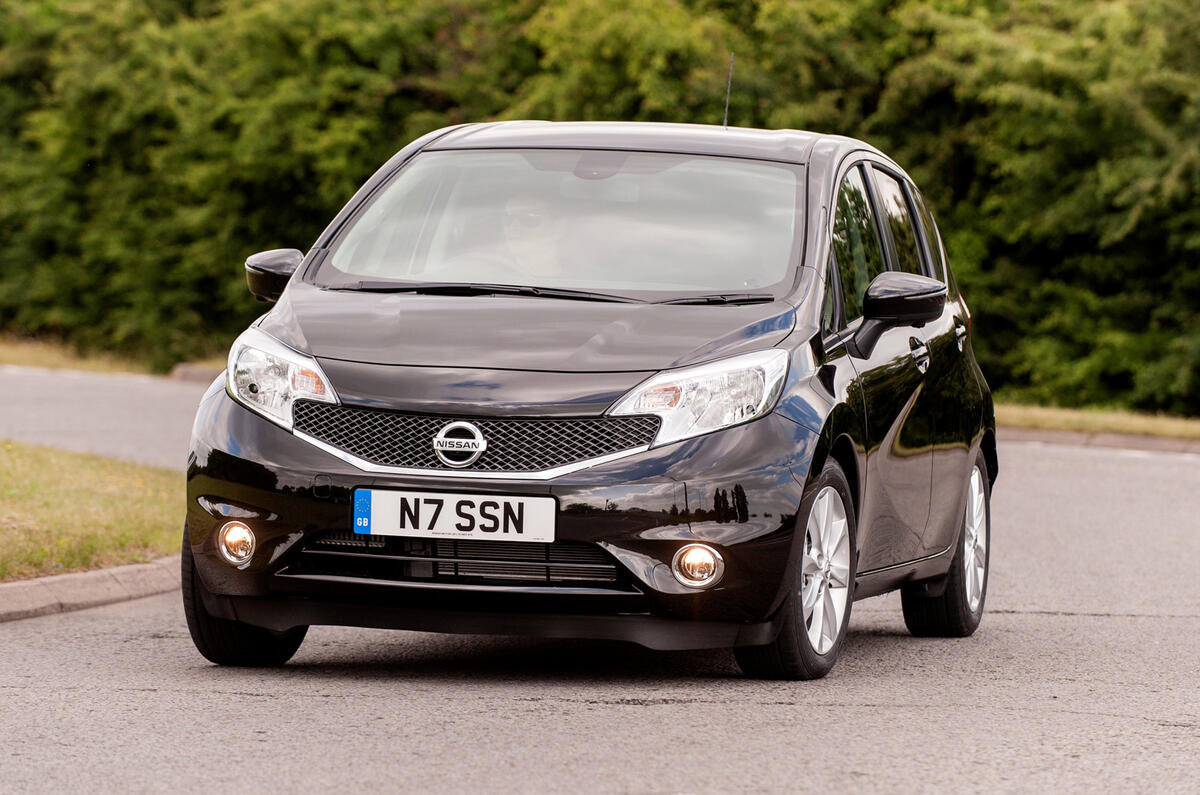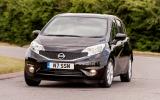What is it?
The replacement for the spacious, if decidedly bland, Nissan Note. But while the first generation model followed a well trodden compact MPV path, the new model has evolved into a direct competitor to the likes of the Ford Fiesta and Vauxhall Corsa.
So does that mean Nissan is alienating its loyal band of Note owners who liked the previous model's high seating position and general disposition? Not necessarily. Nissan says the new car will appeal to a wider range of buyers, and once current Note owners try the new car, they will find the seating position similar to that of their own car. That’s bullish, but bosses expect the Note to replace the Nissan Micra as the marque’s third most popular car after the Nissan Qashqai and Nissan Juke.
Either way, the Note has finally arrived in the UK after being previewed in 2012’s Invitation concept. Happily, the production model is largely unchanged. Nissan claims best-in-class aerodynamics, aided by the unique plastic front end offered to European buyers.
The car is based on Nissan’s V platform, which it shares with the latest Micra. It uses a MacPherson strut set-up at the front and a torsion beam at the rear, meaning that boot space is largely unaffected despite the sleeker lines.
Improved practicality stretches to rear doors which open to almost 90deg, and a rear bench with handles in the boot and in the cabin to slide the seats fore and aft. Despite appearances to the contrary, Nissan says the seats are mounted only fractionally lower than before, making it easy to climb in and out of.
Nissan also claims the new car has more cabin space and the best rear legroom in its class. Mid and top-spec models also feature a decent level of technology, something which Nissan hopes will attract a younger audience. The Acenta Premium model tested here, the third of a four-strong range, includes the latest generation of Nissan’s Connect multimedia system, which includes sat-nav and phone connectivity.
We’re testing the 92g/km 1.5-litre dCi diesel, which is expected to account for around 40 per cent of private sales. It is a familiar engine, and the only four-pot in the range; the petrol engines are naturally aspirated and supercharged versions of Nissan’s 1.2-litre triple.

























Join the debate
Add your comment
I like it! Looks much better
I like it! Looks much better than the last model and it seems to do exactly what it says on the tin. The genuine 62mpg fuel economy is great, very rare these days a car gets that close to its official figure. And as for "lack of dynamic flair", what a stupid thing to say about a Nissan Note!
In defence of Autocar, where
In defence of Autocar, where in the report does it imply the car fails because it's not very good on race tracks? They steering may well have little feedback, but Autocar goes on to acknowledge this is beneficial around town, which is the Note's natural territory.
Lack of dynamic flair? I wish such publications were around, when I purchased a new Nissan Stanza ('A' registration as in A123XYZ which ever year that was?) That car wasn't designed for track days either but neither could it take a corner at 70mph on a motorway without emulating a fairground ride. The press back then only concentrated on it's low fuel consumption, front-wheel drive, the masses of room for 5 adults and lack of a transmission tunnel. Wish someone told me it had all the dynamic flair of a blancmange.
I still don't know...
... why every reviewer wants to compare the new Note with Fiesta.
To my eye, it still looks like a mini-MPV. Ok. Sharper than the old.
But still a mini-MPV. Why not compare it with B-Max, Jazz, IX20?
On another note, I'm startled that Autocar testers got 62mpg from this Renault-sourced diesel.
The norm would have been testers driving like lunatics and reporting something like 40mpg!